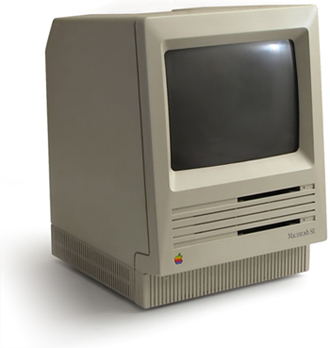
Apple has historically kept a relatively small assortment of products, but over the last ten years it has slowly expanded its reach into new product categories.
From its inception in 1976 all the way up until the turn of the century, Apple was a personal computer company exclusively. It not only limited its product assortment in breadth, but also depth. For many years, the Lisa, and then the Macintosh were essentially the only tangible products they sold: all-in-one personal computer solutions with the computer built into the monitor.

In 2001, Apple made the first major change to its product mix by introducing the iPod. By extending its brand to the portable music player category, Apple was taking a huge risk, but the new category would allow Apple to reach a completely segment of consumers. Furthermore, Apple recognized the opportunity to transform these new customers into Mac customers by roping them into the iTunes ecosystem. iPod users would need music on their devices, and they would need a computer with which to purchase that music, so iTunes and iMacs were perfect support products.
 As most people are well aware, the iPod eventually went on to be a huge hit for Apple (although the introductory stage was notably rocky). Furthermore, in the same year, Apple had opened its first Apple Retail Store with the aims of improving its distribution strategy. As the company grew off of a string of huge successes both with new iPods and re-designed Macbooks and iMacs, its product lines began to expand. The iPod Mini was introduced alongside the classic iPod, followed by the iPod Nano and Shuffle. In addition, the brand was extended even further with products such as the Apple TV, or more recently, the iPad.
As most people are well aware, the iPod eventually went on to be a huge hit for Apple (although the introductory stage was notably rocky). Furthermore, in the same year, Apple had opened its first Apple Retail Store with the aims of improving its distribution strategy. As the company grew off of a string of huge successes both with new iPods and re-designed Macbooks and iMacs, its product lines began to expand. The iPod Mini was introduced alongside the classic iPod, followed by the iPod Nano and Shuffle. In addition, the brand was extended even further with products such as the Apple TV, or more recently, the iPad.
However, even as Apple has expanded its product assortment over the years, it has proven the merits of a closely integrated product mix, with a specific focus and a limited scope. For the second largest company in the United States its product mix and product lines are still astonishingly small, which proves that diversification isn’t always necessary for success.

Most recently, Apple has added newly redesigned Macbook Airs to its notebook product line. These small and light laptops attempt to compete with with Windows based notebooks, offering superior quality and performance. The prices have even become more competitive at $999, however, they are still priced far above Windows-based alternatives that can be purchased for under $400. You can read more about the new Macbook Air on Chang Jie Hu’s marketing blog here.
One response
Do you want to comment?
Comments RSS and TrackBack Identifier URI ?
Trackbacks